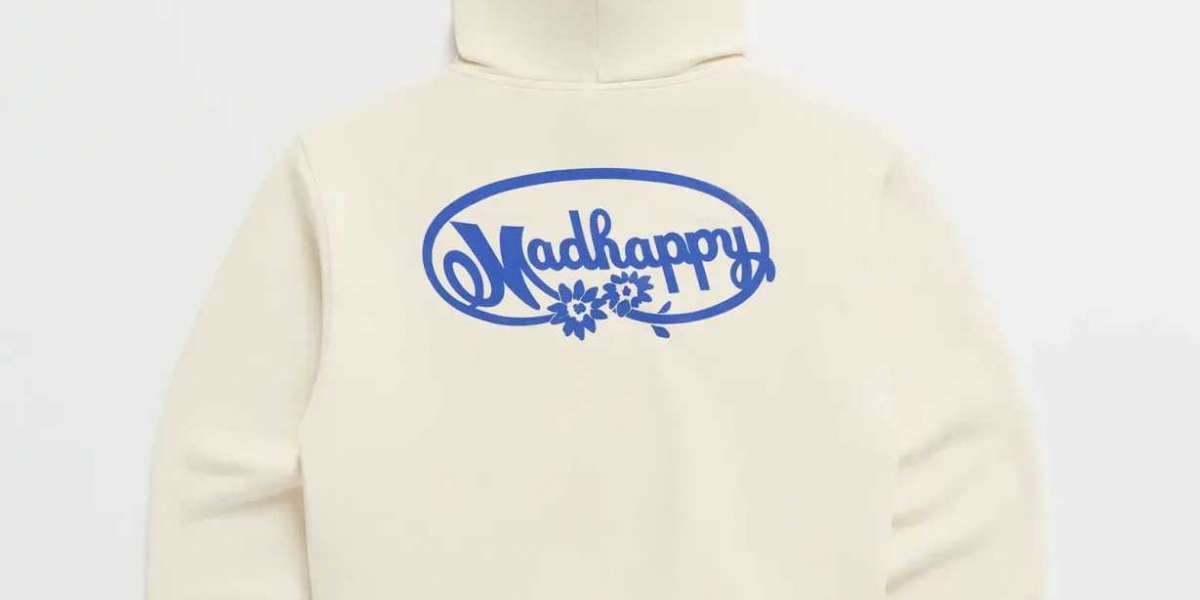A New Era in Fashion and Mental Health
In a world where the fashion industry often prioritizes trends over meaning, Mad Happy emerges as a groundbreaking brand with a mission far deeper than aesthetics. Born at the intersection of mental health awareness and streetwear culture, Mad Happy is not just a label — it's a movement. Unlike traditional clothing brands that aim solely to impress with design or exclusivity, Mad Happy boldly reshapes what fashion can be by promoting emotional well-being, community, and openness. As anxiety, depression, and loneliness increasingly impact global youth, this Los Angeles-based brand has risen to meet a cultural need, infusing streetwear with purpose, vulnerability, and hope.
Founding Story: From Struggles to Statements
Mad Happy was founded in 2017 by a group of young visionaries: Peiman Raf, Noah Raf, Mason Spector, and Josh Sitt. Their idea was simple yet revolutionary — to create a brand that normalized conversations around mental health while delivering stylish, high-quality clothing. The name "Mad Happy" itself encapsulates the duality of human emotion, acknowledging that it's okay to feel both positive and negative emotions at once. It's a celebration of the human experience in all its complexity.
The brand's origin wasn't born out of business ambition alone. Peiman Raf and Mason Spector both personally struggled with mental health challenges and recognized a lack of honest discourse in the fashion world. Instead of hiding their vulnerabilities, they chose to build a brand that thrives on them — one that would turn inner battles into a universal message of connection and strength.
The Mad Happy Aesthetic: Simplicity with Soul
Mad Happy's designs are immediately recognizable: colorful palettes, clean typography, and often uplifting or introspective slogans such as "Local Optimist" or "Mental Health is Health." At first glance, their clothing may seem minimalistic, but there's an underlying emotional intelligence behind each design. The choice of colors often reflects mood psychology — soft pastels evoke calmness, while bolder hues suggest energy and empowerment.
Unlike traditional streetwear brands that lean heavily into hype and exclusivity, Mad Happy prefers a more inclusive approach. Their pieces are crafted with comfort in mind, featuring heavyweight cotton hoodies, roomy sweatpants, and relaxed silhouettes that are as emotionally soothing as they are physically comfortable. The designs often include stitched smiley faces, affirmations, or phrases that provoke introspection. Each item is intentionally crafted to spark thought, dialogue, or simply offer a comforting hug through fabric.
More Than Merch: Mental Health as the Mission
What truly sets Mad Happy apart is its unwavering commitment to mental health advocacy. The brand doesn't treat this theme as a marketing gimmick — it lives and breathes it. In fact, Mad Happy co-founded The Mad Happy Foundation , a non-profit initiative that allocates 1% of the brand's profits to mental health efforts globally. The foundation partners with experts, therapists, and organizations to fund research, provide education, and increase access to resources.
This commitment extends to their digital presence as well. Mad Happy's blog and social platforms regularly share mental health content — from personal stories to expert advice — breaking the stigma around emotional challenges. They've collaborated with institutions like The Jed Foundation and the University of Pennsylvania's Positive Psychology Center to ensure their message is both heartfelt and grounded in research.
Mad Happy also uses their pop-up stores as safe spaces for community healing. These immersive retail experiences are often equipped with mental health resources, interactive exhibits, and workshops. For example, in one activation, visitors could write down their thoughts on sticky notes and post them on the walls — a symbolic gesture of shared vulnerability and collective healing.
Collaborations That Matter
In today's fashion ecosystem, collaborations are currency — but for Mad Happy, they're also meaningful partnerships. The brand has teamed up with a range of unexpected collaborators, from luxury labels to non-profits and lifestyle brands, always staying true to its mental wellness ethos.
One standout example was their collaboration with Columbia Sportswear . The partnership resulted in a nature-inspired capsule collection designed to promote the mental health benefits of time spent outdoors. The campaign wasn't just about selling jackets; it emphasized hiking as therapy and nature as a healing force.
Madhappy Tracksuit also worked with major platforms like Lululemon and NBA , not just to increase reach but to deepen conversations around emotional resilience, especially in high-pressure environments like sports and fitness. These strategic alliances reflect Mad Happy's ability to merge mental health dialogue into different cultural sectors, from athletics to art to high fashion.
Cult Following: A Brand That Resonates
The resonance of Mad Happy lies in its authenticity. In an era where Gen Z and Millennials crave brands that mean something, Mad Happy delivers in every stitch. The brand's ability to connect with youth culture — without exploiting it — has garnered a loyal following that sees Mad Happy as more than just a logo.
Celebrities and influencers have embraced the label, but so have therapists, educators, and mental health advocates. From the streets of Los Angeles to college campuses across the globe, Mad Happy has created a tribe of "local optimists" who wear their emotional honesty proudly. This sense of belonging is critical — especially in times of global uncertainty, isolation, and anxiety.
The power of the Mad Happy community isn't just about wearing the clothes — it's about joining a movement. Many customers post deeply personal reflections while wearing Mad Happy gear, creating a digital journal of hope, healing, and shared experience.
Sustainability and Conscious Craftsmanship
Mad Happy doesn't stop at mental health advocacy; it also considers environmental impact. The brand has increasingly leaned into sustainable production methods, using organic fabrics, ethically sourced materials, and responsible manufacturing partners. While they are still on their journey towards full sustainability, the transparency and intent are evident.
They've experimented with limited drops and capsule collections to minimize waste and overproduction, emphasizing mindful consumption over constant releases. For Mad Happy, slow fashion isn't just a trend — it's a responsibility.
Challenges and Criticisms: A Brand Under Scrutiny
No brand with as bold a message as Mad Happy is free from criticism. Some have questioned whether it's possible to genuinely merge commerce with a topic as delicate as mental health. Others have accused the brand of capitalizing on pain to sell sweatshirts. However, Mad Happy has responded to such criticism with clarity and humility — acknowledging the complexity of their mission while reinforcing their dedication to the cause.
They've taken concrete steps to ensure their efforts aren't performative. Their foundation, expert partnerships, and educational content all point towards a brand doing the work rather than just leveraging a trend. Still, it's a tightrope to walk — and Mad Happy seems committed to staying on course.
The Future of Mad Happy: Scaling a Global Mission
As Madhappy continues to grow, the question is not whether they will remain relevant, but how they will scale their message responsibly. The team has expressed a desire to expand globally, tailoring mental health campaigns to regional cultures and norms. Their hope is to become a global force for good — not just in fashion, but in mental health advocacy worldwide.
Upcoming plans include a broader retail presence, deeper educational partnerships, and more interactive experiences that merge psychology, community, and creativity. Mad Happy isn't trying to be just another hype brand; it wants to be a cultural institution — one that influences how we dress, speak, and think about emotional well-being.
Clothing That Connects, Stories That Heal
In a saturated world of logos and limited drops, Mad Happy stands as a beacon of sincerity. It's a brand that dares to go deeper — turning T-shirts into tools for healing and hoodies into hugs for the soul. The real fabric of Mad Happy isn't cotton or fleece — it's compassion.
By normalizing conversations around mental health and creating stylish, functional clothing to back it up, Mad Happy isn't just selling fashion; it's selling a better future. For a generation in search of connection, belonging, and understanding, Mad Happy offers more than a look — it offers a lifestyle rooted in hope, honesty, and humanity.
This is more than streetwear. This is streetwear with a heartbeat. And in today's world, that heartbeat matters more than ever.








